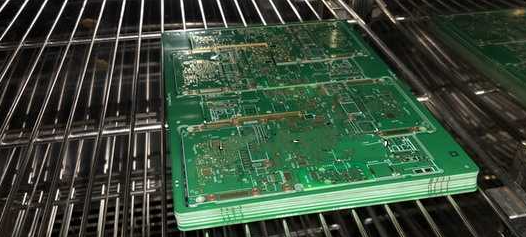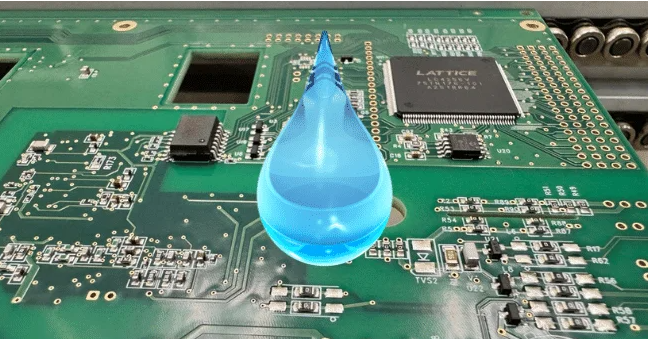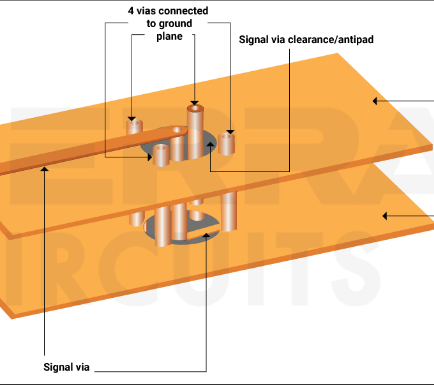Pcb assembly baking
Importance Of Baking In PCB Assembly
Printed Circuit Board (PCB) assembly is a critical process in the manufacturing of electronic devices, and one of the essential steps in this process is baking. Baking PCBs is not merely a procedural formality; it plays a pivotal role in ensuring the reliability and longevity of the final product. The importance of baking in PCB assembly cannot be overstated, as it addresses several key issues that can compromise the performance and durability of electronic components.
To begin with, moisture absorption is a significant concern in PCB manufacturing.
PCBs are typically made from materials such as FR-4, which are hygroscopic in nature, meaning they can absorb moisture from the environment. This absorbed moisture can lead to a variety of problems during the soldering process. For instance, when the PCB is subjected to high temperatures during soldering, the trapped moisture can vaporize and expand, causing delamination, blistering, or even catastrophic failure of the board. By baking the PCBs before assembly, manufacturers can effectively remove this moisture, thereby mitigating the risk of such defects.
Furthermore, baking is crucial for ensuring the proper adhesion of solder paste to the PCB.
Solder paste is a mixture of powdered solder and flux, and its performance can be adversely affected by the presence of moisture. Moisture can cause the solder paste to become less tacky, leading to poor adhesion and potential issues with component placement. By baking the PCB, manufacturers can ensure that the solder paste adheres correctly, resulting in a more reliable solder joint and, consequently, a more dependable electronic device.
In addition to moisture removal, baking also helps in the outgassing of volatile organic compounds (VOCs) that may be present in the PCB materials or components.
These VOCs can be released during the soldering process, leading to voids in the solder joints or other forms of contamination. By baking the PCBs, these VOCs are driven off before the soldering process begins, thereby enhancing the overall quality and reliability of the solder joints.
Moreover, baking is particularly important for PCBs that will be used in high-reliability applications, such as aerospace, medical devices, and automotive electronics.
In these applications, even minor defects can have serious consequences. Therefore, the additional step of baking ensures that the PCBs meet the stringent quality and reliability standards required for such critical applications.
It is also worth noting that the baking process itself must be carefully controlled to achieve the desired results.
The temperature and duration of baking must be optimized based on the specific materials and components used in the PCB. Over-baking can lead to thermal degradation of the materials, while under-baking may not effectively remove all the moisture and VOCs. Therefore, manufacturers must follow precise guidelines and industry standards to ensure that the baking process is both effective and efficient.
In conclusion, baking is an indispensable step in PCB assembly that addresses several critical issues, including moisture removal, solder paste adhesion, and outgassing of VOCs. By incorporating this step into the manufacturing process, manufacturers can significantly enhance the reliability and longevity of their electronic products. As the demand for high-quality and dependable electronic devices continues to grow, the importance of baking in PCB assembly will only become more pronounced.

Step-By-Step Guide To PCB Assembly Baking
PCB assembly baking is a critical process in the manufacturing of printed circuit boards (PCBs), ensuring the reliability and longevity of electronic devices. This step-by-step guide aims to elucidate the intricacies of PCB assembly baking, providing a comprehensive understanding of its importance and execution.
To begin with, PCB assembly baking is primarily employed to remove moisture from the PCB substrates and components.
Moisture can be detrimental, leading to issues such as delamination, popcorning, and other forms of damage during the soldering process. Therefore, the initial step involves assessing the moisture sensitivity level (MSL) of the components. This classification, provided by manufacturers, indicates the susceptibility of components to moisture-induced damage. Understanding the MSL is crucial as it dictates the baking duration and temperature.
Once the MSL is determined, the next step is to prepare the baking environment.
The baking oven must be preheated to the appropriate temperature, typically ranging between 100°C to 125°C, depending on the MSL rating. It is imperative to ensure that the oven is calibrated correctly to maintain a consistent temperature throughout the baking process. Additionally, the oven should be free from contaminants that could potentially compromise the integrity of the PCBs.
Subsequently, the PCBs and components are carefully placed in the oven.
It is essential to arrange them in a manner that allows for even heat distribution. Overlapping or stacking the boards can lead to uneven baking, which may result in residual moisture. Therefore, using racks or trays designed for PCB baking can facilitate proper airflow and uniform heating.
The duration of the baking process is contingent upon the MSL rating and the specific requirements of the components.
Typically, the baking time can range from a few hours to up to 48 hours. During this period, it is crucial to monitor the temperature and ensure that it remains within the specified range. Any fluctuations can adversely affect the efficacy of the baking process.
Upon completion of the baking cycle, the PCBs and components must be allowed to cool gradually within the oven. Abrupt temperature changes can induce thermal stress, potentially causing warping or other forms of damage. Once cooled, the PCBs are ready for the subsequent assembly processes, such as soldering and component placement.
It is worth noting that PCB assembly baking is not a one-size-fits-all procedure.
Different materials and components may necessitate tailored baking profiles. For instance, certain high-temperature substrates may require higher baking temperatures, while sensitive components might need lower temperatures and extended durations. Therefore, it is imperative to consult the manufacturer’s guidelines and industry standards to determine the optimal baking parameters.
In conclusion, PCB assembly baking is a vital step in ensuring the reliability and performance of electronic devices. By meticulously following the step-by-step process, manufacturers can effectively mitigate moisture-related issues, thereby enhancing the durability and functionality of the PCBs. Understanding the nuances of moisture sensitivity levels, maintaining a controlled baking environment, and adhering to specified baking durations are all critical components of a successful PCB assembly baking process. Through diligent execution, manufacturers can achieve high-quality, reliable PCBs that meet the rigorous demands of modern electronic applications.
Common Mistakes To Avoid During PCB Assembly Baking
PCB assembly baking is a critical process in the manufacturing of printed circuit boards, aimed at removing moisture from the components and substrates to prevent defects such as delamination, popcorning, and other moisture-related issues. However, despite its importance, several common mistakes can occur during this process, potentially compromising the quality and reliability of the final product. Understanding and avoiding these mistakes is essential for ensuring optimal results.
One prevalent mistake is the improper selection of baking temperature and duration.
Each material used in PCB assembly has specific thermal properties and moisture absorption characteristics. Therefore, it is crucial to follow the recommended baking profiles provided by material manufacturers. Deviating from these guidelines can lead to insufficient moisture removal or, conversely, thermal damage to sensitive components. For instance, baking at excessively high temperatures can cause warping or degradation of the PCB laminate, while insufficient baking time may leave residual moisture, leading to defects during soldering.
Another common error is neglecting to monitor and control the humidity levels in the baking environment.
Moisture can re-enter the PCB assembly if the ambient humidity is not adequately controlled. To mitigate this risk, it is advisable to use a controlled environment, such as a dry cabinet or a nitrogen-purged oven, to maintain low humidity levels during the baking process. Additionally, implementing proper storage practices for moisture-sensitive components before and after baking can further prevent moisture ingress.
Furthermore, improper handling and placement of PCBs during baking can result in physical damage or uneven moisture removal.
It is essential to ensure that PCBs are placed in a manner that allows for uniform heat distribution and airflow. Stacking PCBs too closely or using inappropriate fixtures can create hot spots or areas with insufficient heat exposure, leading to inconsistent baking results. Utilizing appropriate racks or trays designed for PCB baking can help maintain even spacing and support, thereby promoting uniform moisture removal.
In addition to these technical aspects, overlooking the importance of thorough documentation and process control can also lead to mistakes during PCB assembly baking. Maintaining detailed records of baking profiles, including temperature, duration, and humidity levels, is vital for traceability and quality assurance. Implementing process control measures, such as regular calibration of baking equipment and periodic verification of baking profiles, can help ensure consistency and reliability in the baking process.
Moreover, it is essential to consider the specific requirements of different types of PCBs and components.
For example, high-density interconnect (HDI) PCBs and components with fine-pitch leads may require more stringent baking conditions due to their increased susceptibility to moisture-related defects. Tailoring the baking process to accommodate these specific requirements can significantly enhance the overall quality and performance of the final product.
Lastly, a common oversight is the failure to conduct post-baking inspections and tests.
Verifying the effectiveness of the baking process through visual inspections, moisture level measurements, and electrical testing can help identify any residual moisture or defects that may have occurred. Implementing these quality control measures ensures that any issues are detected and addressed before proceeding to subsequent assembly stages.
In conclusion, avoiding common mistakes during PCB assembly baking is crucial for achieving high-quality and reliable printed circuit boards. By adhering to recommended baking profiles, controlling humidity levels, ensuring proper handling and placement, maintaining thorough documentation, and conducting post-baking inspections, manufacturers can significantly reduce the risk of moisture-related defects and enhance the overall performance of their products. Through diligent attention to these factors, the PCB assembly baking process can be optimized, leading to improved outcomes and customer satisfaction.

How PCB Assembly Baking Enhances Reliability And Performance
Printed Circuit Board (PCB) assembly baking is a critical process in the electronics manufacturing industry, aimed at enhancing the reliability and performance of electronic devices. This process involves heating the PCB assemblies in a controlled environment to remove moisture and other contaminants that can adversely affect the functionality and longevity of the final product. By understanding the importance of PCB assembly baking, manufacturers can ensure that their products meet the highest standards of quality and reliability.
One of the primary reasons for PCB assembly baking is to eliminate moisture from the boards and components.
Moisture can be absorbed by the PCB materials during storage or transportation, leading to various issues during the soldering process. When moisture-laden PCBs are subjected to the high temperatures of soldering, the trapped moisture can vaporize rapidly, causing delamination, blistering, or even catastrophic failure of the board. By baking the PCBs before assembly, manufacturers can effectively remove this moisture, thereby preventing these potential defects and ensuring a more robust final product.
In addition to moisture removal, PCB assembly baking also helps in the outgassing of volatile organic compounds (VOCs) and other contaminants that may be present on the board surface.
These contaminants can originate from the manufacturing process, handling, or environmental exposure. If not removed, they can interfere with the soldering process, leading to poor solder joints and reduced electrical performance. Baking the PCBs at appropriate temperatures allows these contaminants to evaporate, resulting in cleaner surfaces that promote better solder adhesion and improved electrical connectivity.
Furthermore, PCB assembly baking plays a crucial role in enhancing the mechanical stability of the boards.
The thermal cycling involved in the baking process helps to relieve internal stresses within the PCB materials, which can arise from the manufacturing process or thermal expansion and contraction during operation. By stabilizing these stresses, the boards become less prone to warping, cracking, or other mechanical failures, thereby increasing their overall durability and reliability.
Another significant benefit of PCB assembly baking is the improvement in solder paste performance.
Solder paste, which is used to attach components to the PCB, contains flux and other additives that can degrade over time or under certain environmental conditions. Baking the PCBs before applying the solder paste helps to activate the flux and remove any absorbed moisture, ensuring that the paste performs optimally during the reflow soldering process. This results in stronger solder joints and a more reliable electrical connection between the components and the board.
Moreover, PCB assembly baking can also aid in the detection of latent defects that may not be apparent during initial inspections.
By subjecting the boards to elevated temperatures, manufacturers can identify issues such as poor adhesion, incomplete curing of coatings, or other hidden defects that could compromise the performance of the final product. Early detection of these issues allows for corrective actions to be taken before the boards are assembled into finished devices, thereby reducing the risk of field failures and costly recalls.
In conclusion, PCB assembly baking is an essential process that significantly enhances the reliability and performance of electronic devices. By effectively removing moisture, outgassing contaminants, stabilizing mechanical stresses, improving solder paste performance, and detecting latent defects, this process ensures that the final products meet the highest standards of quality and durability. As the demand for reliable and high-performance electronic devices continues to grow, the importance of PCB assembly baking in the manufacturing process cannot be overstated.






